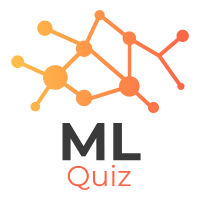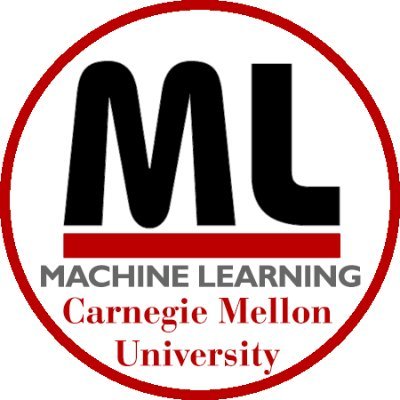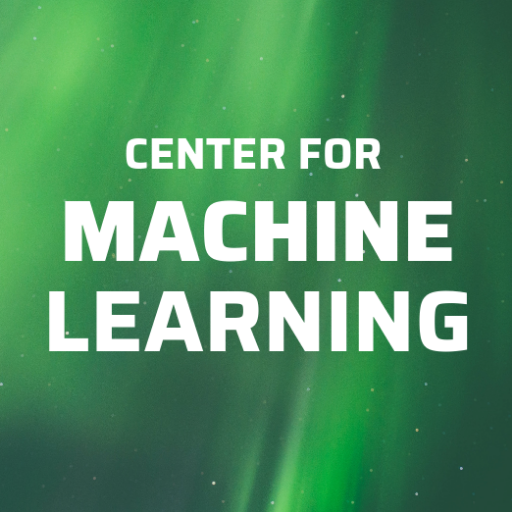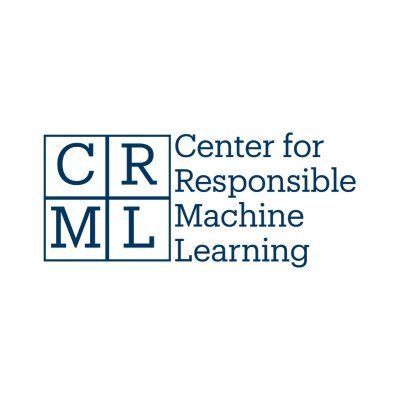
Quiz on Machine Learning
@ml_quiz
Machine Learning with Quizzes
You might like
Which of the following is the example of Bayes Classifiers? NOTATIONS QDA: Quadratic discriminate analysis LDA: Linear discriminate analysis #MachineLearning #DeepLearning #NeuralNetworks #ArtificialIntelligence #DataScience
Bayesian Inference can be summarized into 4 major steps: a. Calculate Likelihood b. Calculate/Collect prior c. Calculate posterior d. Inference. Which one represents the correct order ? #MachineLearning #DeepLearning #NeuralNetworks #ArtificialIntelligence #DataScience
Given the data 'D' and the model (parameter) 'θ', which of the following is called likelihood ? #MachineLearning #DeepLearning #NeuralNetworks #ArtificialIntelligence #DataScience #bayesianlearning #quiz
Given the Bayes Theorem, P(parameter|data) = [P(data|parameter) * P(parameter)] / P(data) We can reduce it to: P(parameter|data) ∝ P(data|parameter) * P(parameter) #MachineLearning #DeepLearning #NeuralNetworks #ArtificialIntelligence #DataScience
7 vote · Final results
Given the Bayes Theorem, P(Y|X) = [P(X|Y) * P(Y)] / P(X), P(Y|X) refers to - " how likely is the occurrence of Y given X is already observed? " #MachineLearning #DeepLearning #NeuralNetworks #ArtificialIntelligence #DataScience #data #DataMining #programming
15 vote · Final results
Given the Bayes Theorem, P(Y|X) = [P(X|Y) * P(Y)] / P(X), P(X|Y) refers to - "how likely is it to observe X if Y was known ?". #MachineLearning #DeepLearning #NeuralNetworks #ArtificialIntelligence #DataScience #data #DataMining #programming
7 vote · Final results
Given the Bayes Theorem, P(Y|X) = [P(X|Y) * P(Y)] / P(X), What is P(Y) refers to ? NOTATIONs: BP : beliefs prior BA : beliefs after #MachineLearning #DeepLearning #NeuralNetworks #ArtificialIntelligence #DataScience #data #DataMining #programming
Generative machine learning is training a model to learn parameters maximizing the joint probability - P(X, Y), between the target variable Y and features X. #MachineLearning #DeepLearning #NeuralNetworks #ArtificialIntelligence #DataScience #data #DataMining #programming
7 vote · Final results
Discriminative models estimates: p ( y | x ) —the probability of a label y given observation x. #MachineLearning #DeepLearning #NeuralNetworks #ArtificialIntelligence #AI #ML #DataScience #data #DataMining #tech #bigdat #programming
6 vote · Final results
Which of the following is not a generative machine learning model? #MachineLearning #DeepLearning #NeuralNetworks #ArtificialIntelligence #AI #ML #DataScience #data #DataMining #gradient #tech #bigdata #TechNews #Artificial #intelligence #programming
Hierarchical clustering can be divided into two groups: Agglomerative and Divisive. Agglomerative clustering is a top down approach whereas Divisive clustering a buttom up approach. #MachineLearning #DeepLearning #NeuralNetworks #ArtificialIntelligence #DataScience #DataScientist
5 vote · Final results
In hierarchical clustering, we don't need to pre-specify the number of clusters. #MachineLearning #DeepLearning #NeuralNetworks #ArtificialIntelligence #AI #ML #DataScience #data #DataMining #gradient #tech #bigdata #TechNews #Artificial #intelligence #programming
8 vote · Final results
What is true about DBSCAN clustering algorithm? #MachineLearning #DeepLearning #NeuralNetworks #ArtificialIntelligence #AI #ML #DataScience #data #DataMining #gradient #tech #bigdata #TechNews #Artificial #intelligence #programming
DBSCAN clustering algorithm can find arbitrary shaped clusters. #MachineLearning #DeepLearning #NeuralNetworks #ArtificialIntelligence #AI #ML #DataScience #data #DataMining #gradient #tech #bigdata #TechNews #Artificial #intelligence #programming
12 vote · Final results
DBSCAN clustering algorithm separates clusters of high density from clusters of low density. #MachineLearning #DeepLearning #NeuralNetworks #ArtificialIntelligence #AI #ML #DataScience #data #DataMining #gradient #tech #bigdata #TechNews #Artificial #intelligence #programming
11 vote · Final results
To avoid k-means clustering from getting stuck to a bad local minima, we should try using multiple random initializations. #MachineLearning #DeepLearning #ArtificialIntelligence #DataScience #tech #programming #data
9 vote · Final results
United States Trends
- 1. Raindotgg N/A
- 2. Louisville 13.8K posts
- 3. Ortiz 15.2K posts
- 4. Nuss 5,515 posts
- 5. Miller Moss 1,113 posts
- 6. Bama 13.2K posts
- 7. UCLA 6,853 posts
- 8. #GoAvsGo 1,131 posts
- 9. Emmett Johnson 1,215 posts
- 10. Brohm 1,071 posts
- 11. #Huskers N/A
- 12. Ty Simpson 3,395 posts
- 13. The ACC 19.7K posts
- 14. Clemson 6,501 posts
- 15. Nikki Glaser N/A
- 16. #AEWCollision 9,706 posts
- 17. #RockHall2025 5,734 posts
- 18. Kentucky 29.9K posts
- 19. Lagway 3,564 posts
- 20. Stoops 2,043 posts
You might like
-
 Machine Learning Journal (@[email protected])
Machine Learning Journal (@[email protected])
@MLJ_Social -
 Machine Learning Dept. at Carnegie Mellon
Machine Learning Dept. at Carnegie Mellon
@mldcmu -
 El Asesor Financiero
El Asesor Financiero
@ElAsesorFinanci -
 UMD Center for Machine Learning
UMD Center for Machine Learning
@ml_umd -
 🤖🇨🇭AI & Machine Learning @ HSLU
🤖🇨🇭AI & Machine Learning @ HSLU
@hslu_aiml -
 Arctic Data Center
Arctic Data Center
@arcticdatactr -
 Machine learning in Business
Machine learning in Business
@ai__analytics -
 Rob Lockard #ACED
Rob Lockard #ACED
@YourNavionPilot -
 Standard AI
Standard AI
@StandardAI -
 UCSB Center for Responsible Machine Learning
UCSB Center for Responsible Machine Learning
@ucsbcrml -
 The Machine Learning Bot
The Machine Learning Bot
@botnowa -
 Ing Rebecca Ebe Ohemeng Appiah
Ing Rebecca Ebe Ohemeng Appiah
@ReccaEbe
Something went wrong.
Something went wrong.



























































